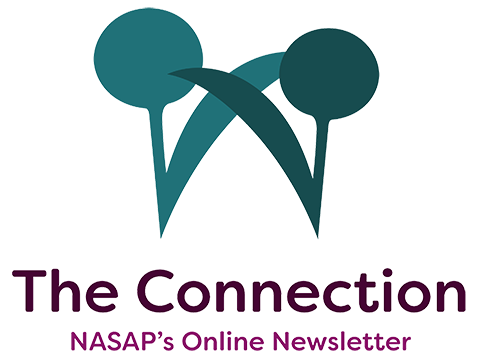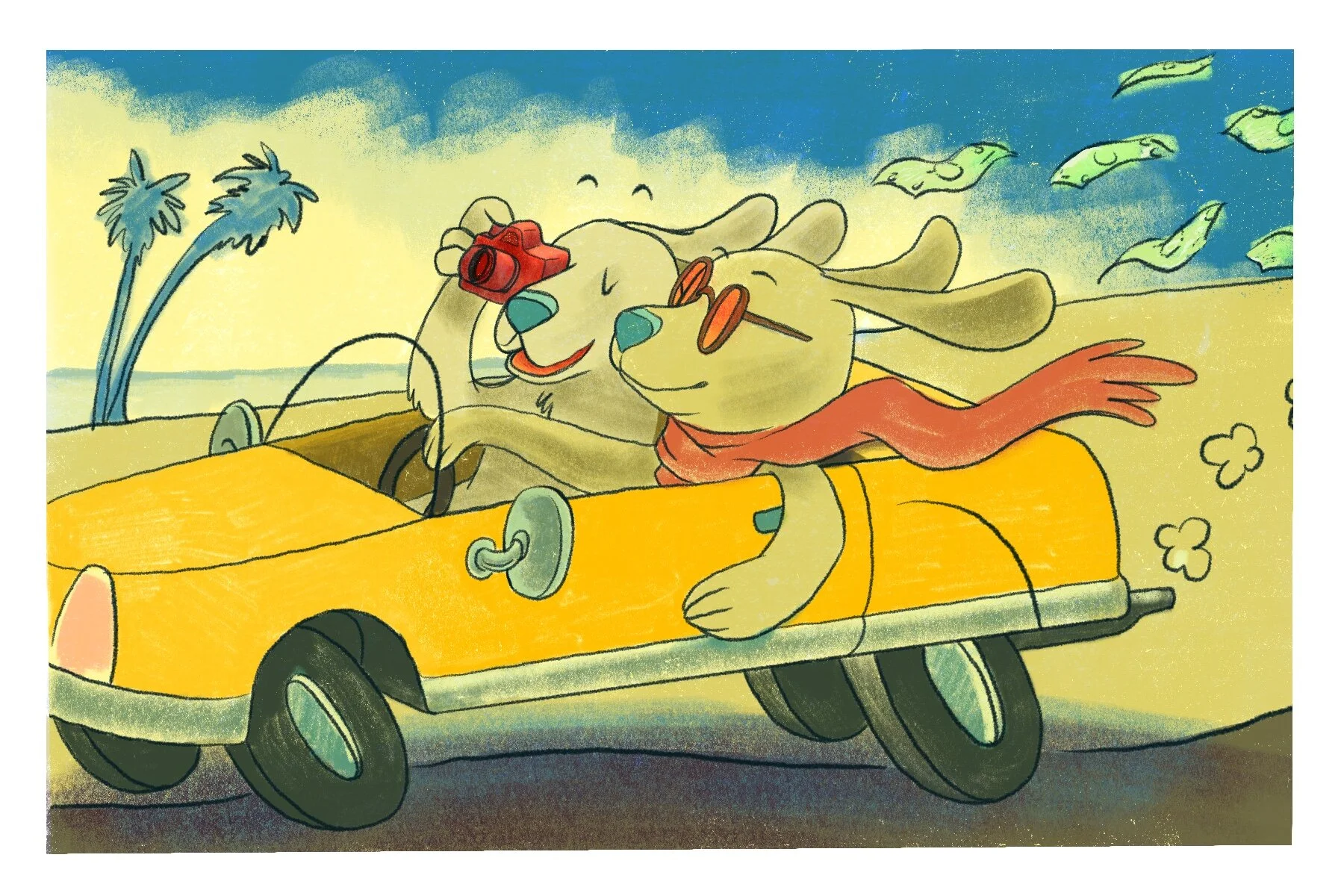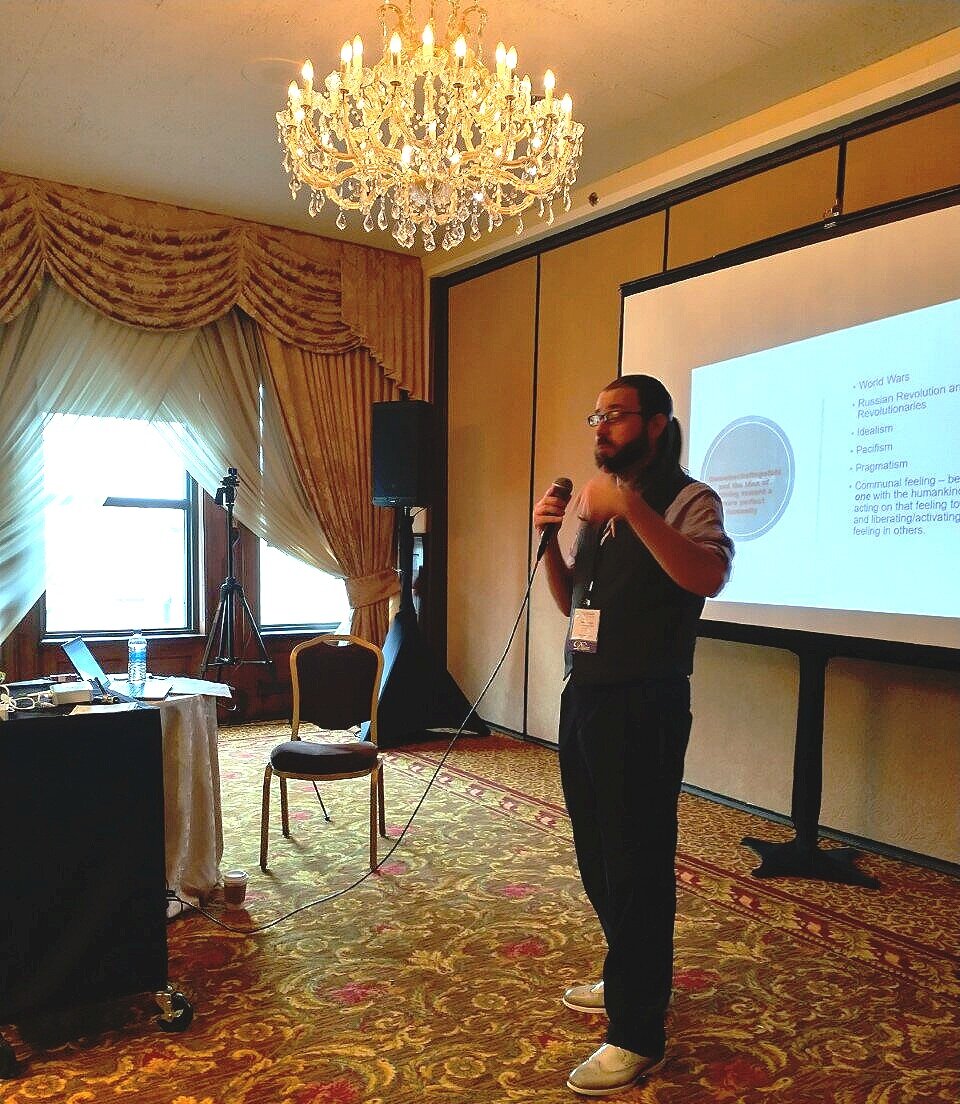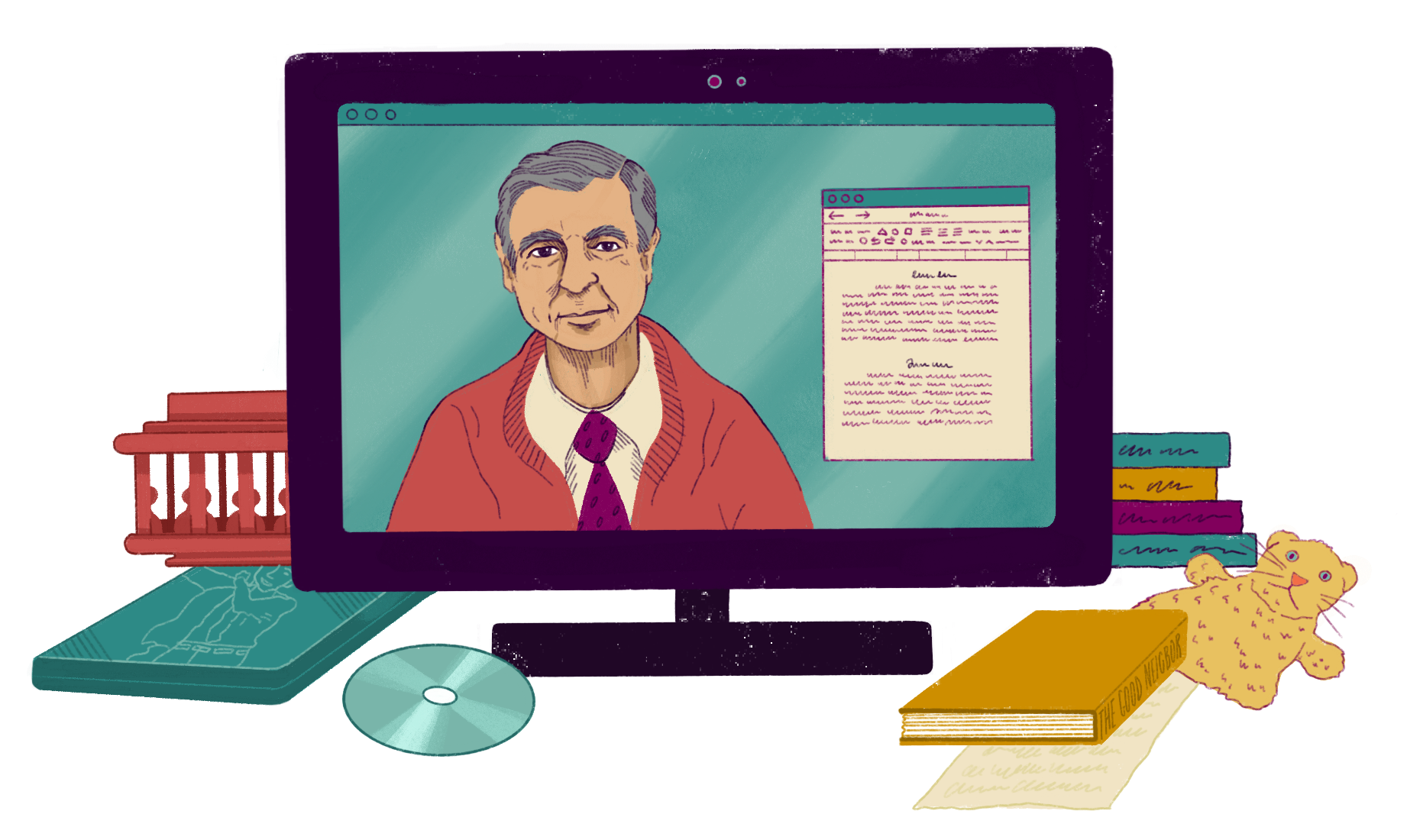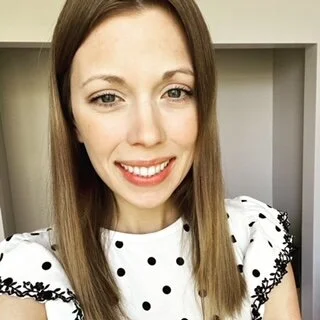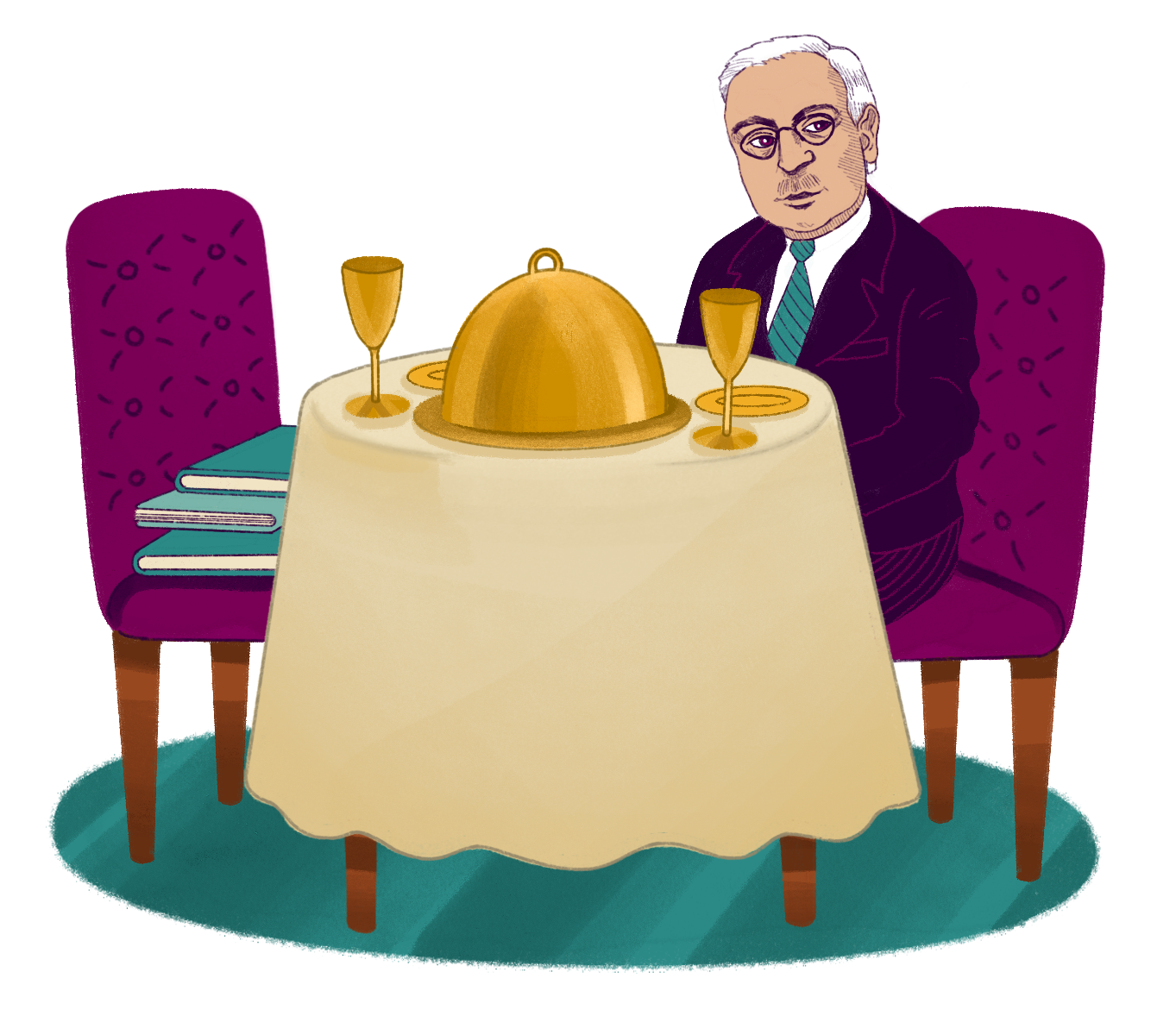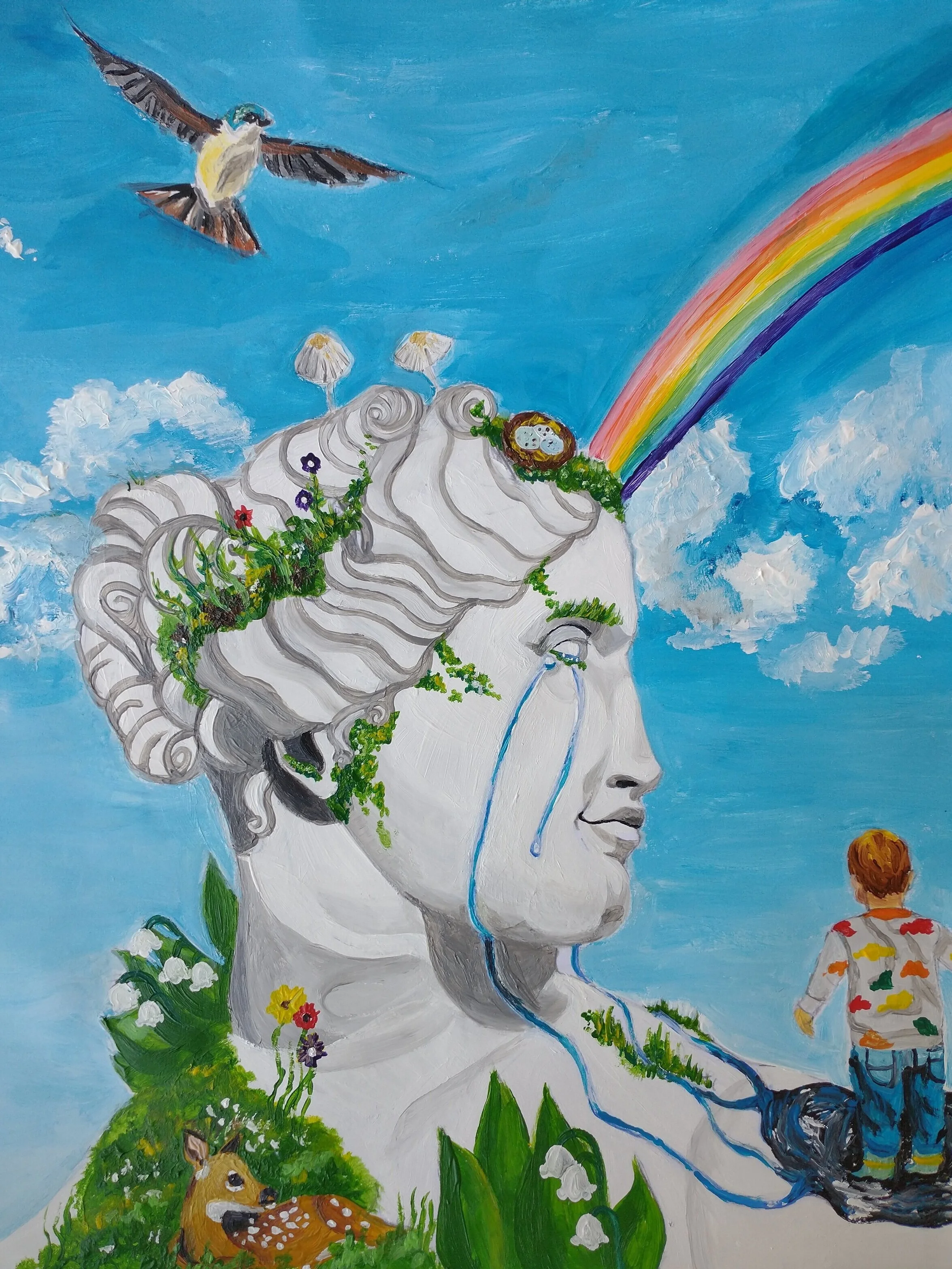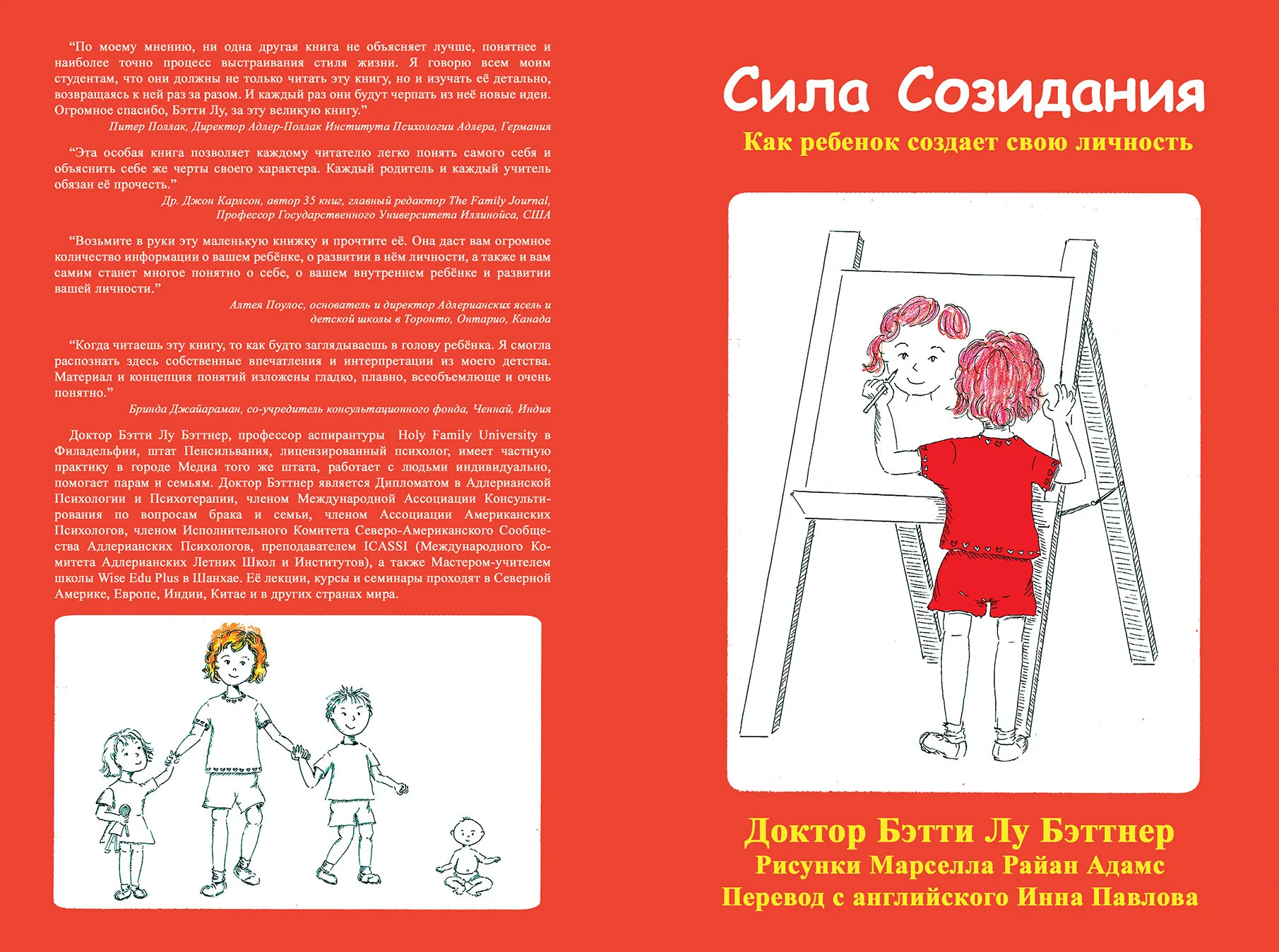
Welcome to the Connection
July 2021 Issue
From the Editors
In this July issue, the Social Justice Taskforce (SJTF) writes our only monthly column. This month the co-chair, Bengu Tekinalp, the President-Elect of NASAP, has collected the thoughts of the task force- toward a collective, future-imagining- a theme continuing from the May conference plenary and the recent Holding Space event that addressed past hurts within our organization. Because many people attended our last Holding Space and expressed a demand for more conversations of this kind, SJTF will be holding space again soon on this topic and looks forward to more venues for dialogue. Please send them your thoughts.
We are spotlighting Kristian Orozco Figueroa this month, a NASAP member in Spain who recently did a talk for the Transformative Leadership & Coaching (TLC) Section. Kristian is a life coach and consultant specializing in Adlerian leadership, personal empowerment, and cohesive teamwork who was so kind as to give us both an English and a Spanish version of his interview (¡muchas gracias, Kristian!). I wonder what Kristian would recommend NASAP do to avoid hurting its members in the future.
Illustration © Jess Minckley, 2017.
Jared ‘Salvatore’ Alberico continues his series on Mr. Rogers’s Neighborhood. Courtney Evans writes about Adlerian play therapy. Along the theme of childhood, we present a literature review about child-parent relational therapy (CPRT), research we thought might interest NASAP-ians who work with kids, parents, and families. Additionally, several graduate students present posters with research on art therapy with children. Today’s children are tomorrow’s leaders [and Adlerians], after all.
We’ve built in a Suggestions & Feedback section to our newsletter. We will now include these anonymously, so email us your thoughts! The newsletter is truly a labor of love for us.
Lastly, we have been discussing the differentiation of the Newsletter and the Public Relations committee at length this year.
The Connection has finally decided the Newsletter is not the best place for Affiliate Group or Section events because they need to be sent a month in advance. Please email them instead to the PUBLIC RELATIONS COMMITTEE: nasap.publicity@gmail.com to be promoted on our social media pages!
News from NASAP’s Council of Representatives (COR) will still be located here on an as-needed basis, but we haven’t been receiving many replies from NASAP folks, so we don’t have enough content to keep monthly updates afloat after this month.
So, we are ever-evolving. As Candace Sneed returns, Jess Minckley, a co-editor, will be stepping away to focus on Public Relations. Thanks, Jess for all you have done for the newsletter this year!
President’s Address
Do you consider yourself to be a citizen of your community, your state, your country, or the world?
Tim Hartshorne, President
My friend the pollster John Zogby (he taught history when I was a guidance counselor) used to ask this as a part of his online polls. He told me my answer that I was a citizen of the world was rare for someone in my (and his!) age group. I have thought a lot about this in relation to social interest. Guy Manaster used to say that a sense of community should start locally but would ideally spread out and ultimately encompass the world.
But what a world we have in which to feel a sense of belonging. When I see images of children starving in South Sudan due to the civil war there, do I have a feeling of connection? What about when I see the backup at the cremation fires in India due to the pandemic? When I watch protesters in Hong Kong do I experience social interest? It can be challenging to see these situations as taking place within my community, but they do.
What tribe do you belong to? Are we Adlerians simply members of a tribe that has the answers? In July I will participate as a speaker and registrant in the conference of the International Association of Individual Psychology. I have attended many of these meetings over the years. It is so interesting to listen to how Individual Psychology is understood by people from different countries. Some have a very different understanding than my own. Are they still part of the tribe?
Is my interest in the community broader than my tribes? I live next to an Ojibwe reservation. One of my graduate students was from Columbia. She spent time out at the Tribe providing mental health services, and they totally embraced her. She and her ancestors were brought into ceremonies in the sweat lodge. Once when my wife was pregnant, a graduate student who was Native American asked an elder to carry a pipe for safe delivery. These are expressions of social interest that go beyond the narrowly defined tribe. I believe that as Adlerians these are examples of what we stand for. We must expand the tribe. We may not always get it right, but, then, we are blessed with the courage to be imperfect.
From the Social Justice Task Force
Let’s Dream Together!
NASAP SJTF Members: Minckley, Tekinalp, Martin, Carey, Frantz, Sawyer, Dickinson, Santos, Rebecca, Saxner, Griffith, Carr
Illustration © Jess Minckley, 2019.
Adler talks about social and community feeling, being in harmony within, with the Universe, and growth with being in-relation with others. In his discussions of social interest, in order to cooperate for the solutions of human problems, Adler invited people to lose themselves completely in another or in their situation, to become identified with and “being one” with the other (Adler, ). Through that, we are capable of friendship, love of humankind, sympathy, occupation, and love which are the basis of social interest and can only be practiced in conjunction with others.
Adler’s vision of community guides the Social Justice Task Force (SJTF). As NASAP members, we are learning and growing together. To do this, we need to face the challenges, strive to overcome them, and move towards a sense of belonging. Social justice work is our collective striving toward a felt plus with consistent movement.
We would like to see NASAP as an inclusive, identity-safe, empowered, empowering, and courageous community. For this, we need self-awareness, as individuals and as the community of NASAP. We need each other to see our mistakes, shortcomings, and conditioning more clearly, and support each other as we strive and move towards transforming ourselves. We know as we engage more and more about social injustices, both within our organization and outside in the larger society, we will not always feel comfortable, nor will it be easy. However, as Adlerians, we know with gemeinshaftsgefühl we can have the courage to transform.
We need a bold vision, movement, and to dream together. SJTF wants to “... move beyond the question of ‘What do we need to do?’ to ask, ‘Who do we need to be and what do we need to embody together to bring forth the transformation we seek?’” (Magee, 2017). When we think of “social justice”, we each think about different images. Mostly the image is out there in the system as “another person’s issue”. It is a deception! “Something in the very word ‘system’ or ‘systemic’ consistently leads us astray—seeking some magical change ‘out there’ when the most intransigent aspects of the ‘out there’ are inseparable from our habits of thought and action ‘in here’” (Scheetz & Senge, 2016).
For this reason, SJTF wants to start “in here” within us as individuals and as an organization. In our plenary, we framed this transformation for justice from the Adlerian change process; Engagement, Assessment, Insight, and Reorientation Sommers-Flanagan & Sommers-Flanagan, (2018). In this article, SJTF invites our colleagues to do the insight and reorientation phases with us. Please reflect on the questions below on your own. And please share your dream answers with SJTF co-chairs; so that we all as a community transform ourselves, our organization, and our communities. We were inspired by Adrienne Marie Brown (2017), appreciative inquiry, and APA Division 35’s workshop in developing these questions:
Engagement
How do you want to be engaged with NASAP and one another?
Where do you fit in? What do you need to belong?
What does engagement look like to you?
What gets in our way of genuine dialogue?
What needs to happen/ change to have genuine dialogues/ relationships at NASAP?
How can we make sure everyone belongs unconditionally?
Assessment
What were some hurts you experienced at NASAP?
SJTF Sharing Process:
Who am I?
What do I do?
What areas are my top concerns regarding social justice?
What do you hope to achieve by being part of the Social Justice Task Force?
When you think about your lifestyle, identity, and experiences what might be helping you in navigating difficult conversation, what might be getting in your way?
Think of an individual or an organization with which you are familiar which you have experienced that demonstrates commitment to equity, inclusion, and justice in all of its forms and for all people. How do they demonstrate these values through their structure, process, and practices? (from APA Division 35)
Insight
How does change happen? For you individually, for us as the community?
How can we create compelling pathways from hurt and stagnation to healing and growing?
How can we hold the complexity of identities and situations? (binary way of good/bad, liberal/conservative/ innocent/guilty, harm doer/victim thinking is a polarized thinking that our culture is experiencing at a toxic level now).
How can we believe our own complexity?
How can we navigate conflict, misunderstanding in a principled way?
SHARE WITH US!
Reorientation:
1. What are you dreaming of...
for yourself?
for NASAP?
for the larger community/ society/world?
2. How can we heal our wounds? How can we mend? What can we do to heal and prevent? What processes do we need?
3. What does the desired culture of NASAP look/ feel and act like?
4. If a year from today, what would we experience differently?
5. If you can create a tagline to describe NASAP to a prospective member/ new member, what would that be?
Please share your dream with us: email bengu.tekinalp@drake.edu and/or jessicaminckley@gmail.com. We are happy to connect on the phone or Zoom too, just let us know what your access needs are!
Illustration © Alyssa Rodríguez, 2021.
“To build community requires vigilant awareness of the work we must continually do to undermine all the socialization that leads us to behave in ways that perpetuate domination.” bell hooks (2003).
References
Adler, .
Amerian Psychological Association. (2021). Division 35: The Society for the Psychology of Women. [Workshop]
Brown, A.M. (2017). Emergent strategy. AK Press
hooks, b. (2003). Teaching community: A pedagogy of hope. Routledge.
Magee, V.R. (2017) One Field, Different Doors In: Contemplative Higher Education, Transformative Education, and Education for Social Justice. ICEA Journal, 1, 1, 129-138
Scheetz, M., & Senge. P. (2016). Systemic change and equity. In S. Petty (Ed.), Equity-centered capacity building: Essential approaches for excellence & sustainable school systems transformation. Retrieved from https://www.capacitybuildingnetwork.org/article3/
Sommers-Flanagan, J., & Sommers-Flanagan, R. (2018). Counseling and psychotherapy theories in context and practice (3rd ed). Wiley.
Other Contributions
How Do We Make Gemeinschaftsgefühl Attractive?
Part II
By Jared ‘Salvatore’ Alberico, Y.N.
If you have not read the first part of this discussion series, then please first go back to the March issue to catch up before moving on so you can better understand the message and direction I am going.
When I first started graduate school, everyone wanted to know my theoretical orientation, who my role models were in the field, and what approach I would utilize. Heck if I knew. Being asked these questions made me feel a lot like a little kid being asked by a grownup what job I will be doing for the rest of my life when I grew up:
Jared ‘Salvatore’ Alberico presenting at the 2021 NASAP Conference in Milwaukee, WI.
Looking up at adults dazed and confused, “I don’t know. I’m a kid. I have to answer right now? I can barely stand Fruit Stripe Gum longer than thirty seconds.” [Sideshow joke for those who ever tried this gum).
I liked Adlerian and Adler but it took time, especially with gemeinschaftsgefühl. Even saying that word has taken the time [Sideshow note: I almost got it]. I really had no clue who Adler was or why he might be important to the field. The only reason I became intrigued about Adlerian was due to one person. A professor in graduate school helped me catch an attitude rather than trying to teach, preach, force, threaten, or pressure it upon me; the latter is so often the case in life.
That professor was Dr. Marina Bluvshtein, in my first course in Adlerian theory in 2016. She did not just talk about gemeinschaftsgefühl, she showed it. She demonstrated gemeinschaftsgefühl to those above, below, beside, in front, behind, against or with her. She never treated a student as inferior, as most professors I felt usually did, [Sideshow not: Not all professors, but most).
From one person’s demonstrated daily efforts to live gemeinschaftsgefuhl in their own life and not trying to force it on others, I was hooked and wanted to learn more.. She walked the talk and did not need to say much, at least from my eyes. This was something I had seen very little of in the field at that time
Remember how I told you it took me time to really buy into Adlerian or gemeinschaftsgefühl? Well, I was finding clients were also having the same issue in therapy [Sideshow note: Let me be very clear, I am only talking about my own personal experiences rather than generalizing other professionals have this issue.)].
Catching onto Adlerian ideas took them time just as it did for me. I endeavored to creatively test different strategies to attain a quicker and more consistent buy in (specifically the importance of gemeinschaftsgefühl). It always seemed to be a struggle to try and make gemeinschaftsgefühl attractive. I fear this has become more of a difficult task due to the state of our society and individuals today.
Suddenly, it dawned on me how I could help try to make gemeinschaftsgefühl attractive while watching the movie A Beautiful Day in the Neighborhood (Heller, 2019). For almost two hours, I watched and remembered how this man, Mister Fred Rogers, taught me daily about that neighborly feeling. That neighborship philosophy, dare I say, that community and social feeling. He encouraged a gemeinschaftsgefühl rooted in kindness - an anti-proselytizing gemeinschaftsgefühl, the right type of gemeinschaftsgefühl, the Alder kind. Is there any other?
I found myself diving deep into the study of Mister Rogers. I watched his documentary, read his biography, started watching his old TV shows again (episode by episode), researching online, and writing down thoughts. My gut feeling (my gefühl)was that if listening and watching this man had renewed my own hope for humanity and for myself, then surely I would not be alone in this feeling and that it could also inspire others.
Illustration © Galen Gaze, 2021.
I started to implement this vision in my therapy, now explaining my theoretical style and psychological philosophy rooted in a Mister Rogers and Adlerian framework, all the time really selling the importance and significance of gemeinschaftsgefühl, and it worked. My clients were sold on Adlerian ideas by the end of the first session and they hadn’t even known it yet. They understood and felt gemeinschaftsgefühl immediately through that neighborship message and life of Mister Rogers. All ages did.
I started to call this focus and creative re-imagination (a repackaging if you will) of Adlerian theory: Neighborhood Psychology (I also refer to it as Neighborship/Neighborly Psychology). I chose this name as homage to Fred Rogers and the life he struggled to live. The more I studied Mister Rogers, the more I felt challenged to endeavor to make gemeinschaftsgefühl more attractive to clients. I believe this new method of working with clients, both in individual and group therapy modalities, achieved my challenging goal to sell gemeinschaftsgefühl and other Adlerian philosophies more quickly as well as my goal to encourage the perceived attractiveness and the need for it in my client’s own lives, reflective of Mister Roger’s original ideas.
Some have asked me what the credentials ‘Y.N.’ stand for at the end of my name when I write or present. I tell them it stands for ‘Your Neighbor” - the only credential that I feel matters to me anymore.
I hope you will continue to follow me on this trolly ride as I explain a little more each time. Also understand how this journey has inspired me, my movement, and the clients I have worked with thus far. Imagine with me how meaningful it could be to encourage and make gemeinschaftsgefühl attractive in 2021 and beyond, how I am attempting to take on the challenge from Mister Rogers to struggle to make goodness attractive as much as possible, how I am attempting to take on the challenge from Adler to encourage and live gemeinschaftsgefühl.
References
Heller, M. (Director). (2019). A Beautiful Day in the Neighborhood [Film]. Big Beach Films, Tencent Pictures, and TriStar Pictures.
Adlerian Play Therapy, Trauma, and Multicultural Applicability
by Courtney Evans, PhD, LCMHC-QS, NCC, ACS, RPT-S, BC-TMHC, CAdPT.
Core faculty in the Department of Counselor Education and Family Studies at Liberty University in the Clinical Mental Health Counseling Program
President of the Association for Child and Adolescent Counseling of North Carolina
Background
In addition to my work as a professor, I also work in private practice. I specialize in working with children and adolescents who have experienced trauma. The progression that led to my working with this population includes several previous positions (e.g., working for non-profits and county agencies) providing counseling. I receive referrals from the Department of Social Services, Juvenile Detention Centers, and even court orders.
Prior to becoming a Certified Adlerian Play Therapist (CAdPT), I was trained in several counseling models targeting trauma symptoms, including Trauma-Focused Cognitive Behavioral Therapy (TF-CBT), Child and Family Traumatic Stress Intervention (CFTSI), and EMDR. I was also seeking (at the time) education in play therapy as I sought to become a play therapist (I am now a Registered Play Therapist-Supervisor). Already having identified with Adlerian theory as my theoretical orientation, I was naturally drawn to Adlerian Play Therapy.
Illustration © Alyssa Rodríguez, 2021.
Adlerian play therapy (AdPT) is a holistic model of play therapy, created by Terry Kottman, which is based upon the ideas of Individual Psychology. Basic concepts of Individual Psychology emphasized in AdPT are: (1) people are socially embedded and have a need to belong, (2) people are self-determining and creative, (3) all behavior is goal oriented, (4) reality is perceived subjectively, (5) everyone has feelings of inferiority, and (6) social interest is a sense of connectedness (Kottman & Meany-Walen, 2016). There are four phases of AdPT, with the assessment being very detailed as seeking to understand the lifestyle. Since AdPT is a systems theory, practitioners seek to understand not only information about the client but also the guardians and teachers (and how these relationships influence the interactions with the child).
I first sought training from Terry Kottman through attending one of her Introduction to Adlerian Play Therapy courses, which was held at the University of Central Florida when I attended. At the time, I was working at a county agency, and came back super excited to share everything I had learned! I began implementing the model of play therapy right away! Later on, I received more training in Adlerian Play therapy, went through consultation, and applied AdPT to many cases, (which requires at least 50 for certification and 50 more for advanced certification,) to be certified.
Illustration © Alyssa Rodríguez, 2021.
I quickly became interested in researching the effects of AdPT. A quick search will show that AdPT has been shown to be effective with a variety of populations. My passions and specializations include working with children and adolescents who have experienced trauma. I became curious about the applicability of AdPT to this population, finding there was a gap in the literature about this. This led to using my counseling experiences to investigate the effectiveness of the model, as evaluated through pre and post-trauma symptom measures. This study was published in the Journal of Individual Psychology (Evans, 2020).
In May, my presentation at the NASAP conference in Milwaukee, WI, titled “Adlerian Play Therapy and the Case of Mya” was based upon this clinical work. It went into the details that occurred in one specific case (using the pseudonym of Mya) in depth. I am very excited about the results of my studies so far, indicating the effectiveness of AdPT for children who have experienced trauma. Using different models of “trauma therapy”, I have personally found this to be the most beneficial when working with children. I am thrilled about the promise this holds for this population.
The theme of the NASAP conference this year was “Social Justice: Community Healing Through Movement”. As I am an alumnus of a Historically Black College and University (HBCU), (which I credit for my first “awakening” regarding my own implicit biases and call to further advocacy,) this theme is near and dear to my heart. Mental health professionals must ethically integrate multicultural awareness, knowledge, and skills (Sue & Sue, 2019) into their clinical work. As such, it is always important to consider the cultural implications of any model of counseling. AdPT emphasizes social interest, resilience, family atmosphere, and the subjective reality of individuals, which could help all children form a healthy cultural identity.
I am thankful to have been given the opportunity to present my research at NASAP’s 2021 conference and here in The Connection. I have met such friendly, amazing people as a result!
References
Evans, C. (2020). Adlerian play therapy and trauma. The Journal of Individual Psychology, 76(2), 217-228. https://doi.org/10.1353/jip.2020.0002
Kottman, T., & Meany-Walen, K. (2016). Partners in play (3rd ed). American Counseling Association.
Sue, D. W., Due, D., Neville, H. A., & Smith, L. (2019). Counseling the culturally diverse: Theory and practice (8th ed). Wiley
What’s the Story?
By Les White
We’re a book club with a twist (and an affiliate of NASAP)
Check out our website (with summaries of past meetings): https://www.whatsthestory.online/
Child-Parent Relationship Therapy
A literature review by Faarah Misbah & Alexandria Scalone
Antioch University, Seattle
Illustration © Alyssa Rodríguez, 2021.
“This paper is a clinical research review of Child-Parent Relationship Therapy (CPRT). Child-Parent Relationship Therapy (CPRT) is a 10-week group filial therapy program that teaches parents how to conduct child-centered play therapy (CCPT) sessions with their kids (Landreth et al., 2006). CPRT is conducted in small groups of 4-8 parents, who choose a focus child to work with throughout the program. Parents submit recordings of at-home play sessions and receive feedback from the therapist. CPRT studies evaluate the bond between the parent and child and the effectiveness of parents as agents of therapeutic change, as well as measuring parenting stress and the child’s emotional and behavioral issues.”
Adlerian Spotlight
Kristian Orozco Figueroa
Barcelona, Spain
Certifications: Certified life coach and consultant specializing in Adlerian leadership, personal empowerment, and cohesive teamwork.
Social networks:
Instagram: https://www.instagram.com/agile.courage/
What do you do?
I help people balance the pluses and minuses in their lives.
Where do you work?
I am the founder and director of Agile Courage, a program designed to encourage the growth and development of help professionals committed to creating transformational change in their communities through the principles of Adlerian philosophy.
Research interests/Life Task interests:
Very much like Einstein, I am in search of the theory of everything. This means I always look for the connection between things in a wide range of topics that are of interest to me—from science, psychology, and politics to art, spirituality, and current events.
If you could be any animal/mineral/spirit/object what would you be?
I would love to be a redwood tree— tall, grounded, strong yet flexible.
Why did you join NASAP (and when)?
Because I am based in Barcelona, the time difference and distance have limited my capacity to participate in events of interest. Because the restrictions created by the pandemic prompted many programs to be more readily available online, I joined NASAP to keep learning and connecting with the community of fellow lovers of Adlerian theory.
What are your hopes for the future of NASAP?
It would be wonderful for NASAP to promote the development of Adlerian (life) coaching programs.
How have you participated in NASAP so far?
I have joined some of the virtual workshops and trainings.
What’s one example of how community interest can be increased today?
I believe that focusing our attention on the shared values surrounding a wide range of issues that lead to social conflict is a more effective way to increase interest in the concerns and wellbeing of others.
If you could have lunch with one person from the past, who would it be?
It would definitely be Alfred Adler. I would like to know more about the visionary man who was inspired to bring to the world such a powerful and impactful philosophy on the meaning of life.
Illustration © Galen Gaze, 2021.
What would you eat?
I would probably ask him a million questions, so I am not sure we would have much time to eat! But I suspect we would eat some kind of meat—and vegetables too, of course.
En Español
Ubicación: Barcelona, España
Certificaciones: Coach y consultor especializado en el liderazgo Adleriano, empoderamiento personal y trabajo en equipo cohesivo.
¿Cuáles son tus esperanzas para el futuro de NASAP?
Sería maravilloso para NASAP promover el desarrollo de programas de coaching adleriano.
¿Cómo has participado en NASAP hasta ahora?
Me he unido a algunos de los talleres y formaciones virtuales.
¿Cuál es un ejemplo de cómo se puede aumentar el interés de la comunidad en la actualidad?
Creo que centrar nuestra atención en los valores compartidos que rodean una amplia gama de cuestiones que conducen a conflictos sociales es una forma más eficaz de aumentar el interés en las preocupaciones y el bienestar de los demás.
¿Por qué te hiciste miembro de NASAP (y cuándo)?
Debido a que estoy basado en Barcelona, la diferencia horaria y la distancia han limitado mi capacidad para participar en eventos de interés. Debido a que las restricciones creadas por la pandemia hicieron que muchos programas estuvieran más disponibles en línea, me uní a NASAP para seguir aprendiendo y conectándome con la comunidad de colegas amantes de la teoría Adleriana.
¿A qué te dedicas?
Ayudo a las personas a equilibrar las ventajas y desventajas de sus vidas.
¿Dónde trabajas?
Soy el fundador y director de Agile Courage, un programa diseñado para fomentar el crecimiento y desarrollo de profesionales de la ayuda comprometidas con crear un cambio transformador en sus comunidades a través de los principios de la filosofía Adleriana.
Intereses de investigación / Intereses de tareas de la vida:
Al igual que Einstein, estoy en busca de la teoría del todo. Esto significa que siempre busco la conexión entre cosas en una amplia gama de temas que me interesan, desde la ciencia, la psicología y la política hasta el arte, la espiritualidad y los temas de actualidad.
Si pudieras ser cualquier animal / mineral / espíritu / objeto, ¿cuál serías?
Me encantaría ser una secuoya: alta, firme, fuerte pero flexible.
Si pudieras almorzar con una persona del pasado, ¿con quién sería?
Definitivamente sería Alfred Adler. Me gustaría saber más sobre el hombre visionario que se inspiró para traer al mundo una filosofía tan poderosa e impactante sobre el significado de la vida.
¿Qué comerías?
Probablemente le haría un millón de preguntas, ¡así que no estoy seguro de que tuviéramos mucho tiempo para comer! Pero sospecho que comeríamos algún tipo de carne—y también verduras, por supuesto.
NASAP Announcements
Adler Academy of Minnesota
5th Annual Minnesota Adlerian Conference
https://eventsframe.com/e/nMAWZ0alO/5th-annual-minnesota-adlerian-conference/
Helping Clients Change: Helping Clients Change: You Can’t Pour from an Empty Cup
For this year’s conference, we have reserved space at the MN Landscape Arboretum and will be doing a hybrid conference (live and online). We will address ways therapists and others in the helping professions can combat burnout and compassion fatigue. There will be a limited amount of in-person attendees. Please order your tickets early if you want to attend in person.
NEW this year: The morning portion will include a lecture, demo, and breakout session. The afternoon portion will be a panel discussion with breakout sessions.
The Puget Sound Adlerian Society (PSAS) in Washington state
is looking for technologically savvy presenters for their monthly Forum.
Contact Jessica Hsieh for more information.
The Positive Discipline Association (PDA)
is hosting a fundraiser online event on July 16.
Here is the link with full information about this Life Map opportunity:
Event registration is free with voluntary donations to support scholarships
Follow us:
Our public Conference is October 8th, in person in San Diego, CA.
Registration is opening soon!
Contact is Kelly Gfoerer, Executive Director, at kelly@positivediscipline.org
Milwaukee Affiliate for Social Living (MASL)
is looking for a new affiliate representative.
They also have a new website!
MASL currently offers a monthly consultation group for its members.
MASL meets by Zoom the first Friday of every month for group consultation.
Contact Ben Rader for more information.
ICASSI
Rudolf Dreikurs Virtual Summer School held by ICASSI
July 26-August 8, Offered worldwide.
Check registration booklet for time zones.
Register at https://icassi.cventevents.com/ICASSI2021
Contact for registration: Becky LaFountain, ICASSI administrator
info.icassi@gmail.com
Penn-Del Affiliate
July/August events:
As an Affiliate, on a local level, we are meeting every other week for supervision via Zoom or phone call.
As an Affiliate, we also connect 4 times a year (virtually or via conference call) for support and exchange of materials and ideas.
Penn-Del Affiliate is a small group of individuals who are actively involved in many Adlerian programs at NASAP and ICASSI
Two new translations (Spanish and French) of Betty Lou Bettner's book "The Creative Force" are coming out in July. This book now exists in 11 languages. For books in English, contact Betty Lou Bettner at 610.566.1004
For Russian (image), Spanish and French, please, contact Inna at 215.605.7313
Contact info:
email innarosenfeld@gmail.com
phone 215.605.7313
Sections
The Professional Clinicians Section
would like to rebrand as "Integrated Professionals"- with inclusivity for all service professions, including those that do not currently have licensure. Their focus will be to integrate and apply Adlerian Psychology as well as to invite in like perspectives.
The Theory Research & Teaching (TRT) Section
has new co-chairs, Jennifer and Dan Williamson.
Feedback & Suggestions
From a long time NASAP-ian
What a spectacular job you are doing on the newsletter (can we even call it that anymore?)! The artwork, layout, content, artwork and the ... did I mention the artwork?
Having been a part of NASAP for years and having served on the newsletter myself, I can only tip my hat in deepest appreciation. Wow, seems somehow the most appropriate word.
I deeply appreciate Jess's call-to-think (and act) opening statement. I'm a bit humbled when I see the energy and consistency in your energy and output.
Love the Newsletter Issue
Just love love your newsletter! It’s just lovely! Great job calling out the issues. You're brave. Go art therapy!
From a past NASAP President
Thank you for sending this and congratulations to Tim!
"Live life courageously"
